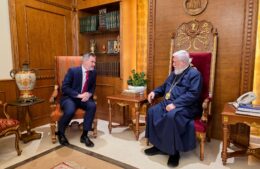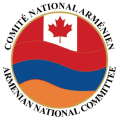Portraits of islamized and tattooed armenian women… 1915
- (0)
Portraits of islamized and tattooed armenian women… 1915 –

Becoming someone else… Genocide and kidnapped Armenian women
The policy of genocide against the Armenian population of the Ottoman Empire started with the annihilation of the male population and subsequent deportation the rest of the people into the Syrian deserts. These deportations quickly turned into “death marches”. Deportation caravans mostly consisted of old people, women and children. En route many of the women were kidnapped either by the Ottoman Turkish soldiers or Kurdish bands, or Bedouins killing any who tried to oppose them: tens of thousands women and children perished on the way to deserts, while others, in order to escape humiliation and violence, committed suicide.
The Armenian genocide resulted in the kidnapping of thousands of Armenian women from their families, usually during deportations or overnight stops. After the organized mass killings of the Armenian male population, during the first stage of state-orchestrated policy of extermination, the Ottoman governors implemented another pre-meditated phase of the genocidal policy: the destruction of the rest of Armenian population in the Ottoman Empire, this time targeting the elderly, women and children.
Some of those individuals who were kidnapped and integrated into Muslim family life, over time forgot about their Armenian ethnicity and even lost the ability to speak their native language. In order to save their own lives and the lives of their loved ones many Armenian women adopted Islam as their faith. They eventually were married off to Muslim men and in keeping with local tribal customs, were marked with specific tattoos. Tattoos were extensively used as amulets in the Middle East and Islamic countries, with the wearers believing that the marks gave them magical powers. These tattoos were often in the form of dots or a small “x” and provided protection, strength or fertility.
After the end of the First World War, many Armenian organizations and foreign missioners helped rescue Armenian women and children from their captors. These rescue missions turned into large-scale operations, rife with danger. Particularly, Karen Yeppe, a Danish missionary who, with the assistance of some Arab tribe leaders, rescued approximately 2000 Armenian women and children from Muslim captivity. She helped establish special rescue homes in several locations which helped put an end to the tragic and painful ordeal many Armenian women had suffered.


















